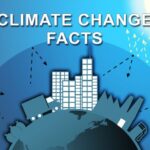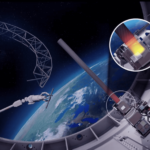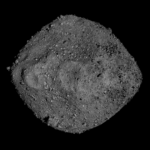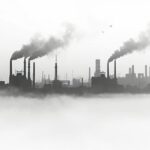While vacationing in Exuma, I met a family from Buffalo, New York, headed up by Michael Patterson, a retired engineer. Michael is a graduate of Penn State University and since 1982 has been a consulting environmental engineer. Even in retirement he continues to engage reporters and politicians about climate change, a subject we spoke about over the week we were together. Michael shared his take on global warming, its causes, and our responses. When he returned to Buffalo, he sent me two well-presented Q&As on climate change of which the first I am sharing today.
I hope you find it clarifies climate change issues and gives you practical advice on how we collectively can mitigate the risk and adapt to the changes we and subsequent generations will face. As always your comments and questions are welcome.
Q: How do Earth’s surfaces stay warmer than the cold vacuum of outer space?
A: By absorption of the extremely hot radiation from the Sun. We feel it when we stand outside on a sunny day. Our skin warms and emits radiation to the surrounding air. If it didn’t, we would continue to heat up.
Q: What keeps ocean surface water from freezing?
A: Special gas molecules located adjacent to the ocean surface. These molecules form a layer at the bottom of the Troposphere, the lower atmosphere. As the air warms, it rises and when it cools, clouds form and rise to the top of the Troposphere.
Q: What is special about these gas molecules?
A: These molecules are non-condensable and have at least three atoms. At ground level, nitrogen (N2) and oxygen (O2) molecules have only 2 atoms and are 96% of the molecules contained in the Troposphere. Argon (Ar) with one atom represents
1% of the molecules. Water vapour amounts to up to 3% of the total. When water vapour condenses, we feel humidity and get precipitation.
Q: How do special gas molecules with more than 3 atoms become warmer than Earth’s surfaces?
A: By absorbing the heat radiated from the ocean, sea, forest, field, and desert surfaces.
Q: How does this miniscule concentration of special molecules warm other molecules in the Troposphere?
A: By agitating them, causing them to collide.
Q: Are Earth’s surfaces warming at an alarming rate?
A: Yes. The rate has increased to 0.2 Celsius (0.36 Fahrenheit) degrees per decade. The result is that mountain glaciers are continually receding, polar ice caps are melting faster, and Arctic Ocean sea ice is thinning.
Q: Should humans be alarmed?
A: Yes. By 2050, we may experience a mean atmospheric temperature increase of 0.55 Celsius (1.0 Fahrenheit) degrees of warming.
Q: According to NASA, what gases contribute to the warming of our Troposphere?
A: Carbon dioxide (CO2) contributes 45%, methane (CH4) 20%, and nitrous oxide (N2O) 3%.
Q: What is the current concentration of CO2 in the Troposphere?
A: The present value from NOAA’s Mauna Loa observatory in Hawaii is 425 CO2 molecules per million (ppm). That means CO2 molecules make up 0.0425% of the atmosphere. That doesn’t seem like a lot but in 1800, CO2 molecules represented a much smaller number, probably closer to 300 ppm.
Q: Why are there more carbon dioxide molecules in the Troposphere today than in our recorded past?
A: Humans are burning too much fossil carbon (coal, crude oil, and high-pressure natural gas).
Q: Define the term “too much.”
A: Too much occurs when living plants cannot photosynthesize the CO2 we humans are creating.
Q: Which plants are important?
A: Trees are important because they can grow continuously for 50 to 1,000 years, ingesting the CO2 and storing it by turning it into wood.
Q: How many trees are we cutting down each year?
A: The approximate total is 15 billion. When a tree is cut down, the CO2 sequestered in it can reenter the atmosphere if burned or left to rapid decay. If decomposition is slow, the CO2 gets released more slowly. If the wood is used for construction and furniture, the CO2 remains stored. Finally, some of the tree’s carbon from roots and leaves gets stored in the soil.
Q: What is the rate of human population growth and why is this relevant to the issue of climate change?
A: In 1961, there were 3.1 billion of us. The present number surpasses 8.2 billion and increases by 65 million every year. The more of us there are, the more we demand from the natural resources of the planet. The more energy we produce for our growing population, more CO2 gets added to the atmosphere and the ocean because of the burning of fossil carbon.
Q: What is fossil carbon?
A: Fossil carbon consists of coal, natural gas, and oil, including byproducts such as gasoline, diesel, propane and other fuels.
Q: Why are humans burning so much fossil carbon?
A: We use the heat energy from fossil carbon to power machines, for manufacturing and other industrial activities, the heating and cooling of buildings, transportation and the generation of electricity.
Q: Are disturbances from heating in the Troposphere causing weather changes?
A: Yes. Most noticeable are the changes to atmospheric currents known as the Jet Stream. These exist in both the northern and southern hemispheres and on average range between 40 and 60 degrees latitude. A subtropical Jet Stream between 15 and 30 degrees latitude exists as well. Jet Streams circle the Earth in the upper Troposphere moving at speeds of up to 160 kilometres (100 miles) per hour. As the atmosphere absorbs more CO2 and other greenhouse gasses, its warming is causing these Jet Streams flows to distort, increasing their latitudinal range. These distortions are contributing to increasing severe weather events.
Q: Is warming of the lower Troposphere causing more drought?
A: Yes. NASA satellites continually monitor groundwater and soil moisture content with notable trends showing some areas of the planet experiencing increasing drought episodes.
Q: Will it be difficult for humans to stop burning so much fossil carbon?
A: Yes. This requires humans to change how we support our way of life.









